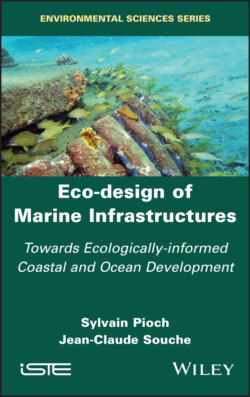Читать книгу Eco-design of Marine Infrastructures - Sylvain Pioch - Страница 18
1.3.2. The Japanese Sato-umi
ОглавлениеThis particular view, and the predominance of the sea, is explained by the geography of Japan, made up of five large islands and 6,847 islands and islets. The exclusive economic zone (EEZ) of Japan, with 4,050,000 km2, is also the sixth largest in the world.
With only 14% of the country’s land area available as arable land, the submerged volume of the sea has long been an essential element in providing the country’s food resources, along with rice cultivation. The ICZM vision is therefore naturally developed in Japan under the term Sato-umi (Figure 1.5).
The term was proposed by Yanagi; it comes from its terrestrial counterpart Satoyama, where sato refers to a place where people live and yama to a forest; the combination of the two terms then leads to a third definition: “the forest near the place where people live”. Sato-yama came from a reaction that we might call neo-modernist, questioning the idea that nature would reach its fullest potential without the work of humans (Dublin et al. 2014). This is what is developed by Lassus (2002) in his book Harmonie et règles urbaines, where the work of humans respects biodiversity, creating different interactive biotopes.
Figure 1.5. The concept of Sato-umi, where humans interact with the aquatic environment for mutual benefit: (a) Japanese Ministry of the Environment (2015); (b) Yanagi (2007)
This idea of Sato-umi, close to the European vision of ICZM16, reinvests the contributions of ecological engineering to integrate nature into the design of infrastructures.
